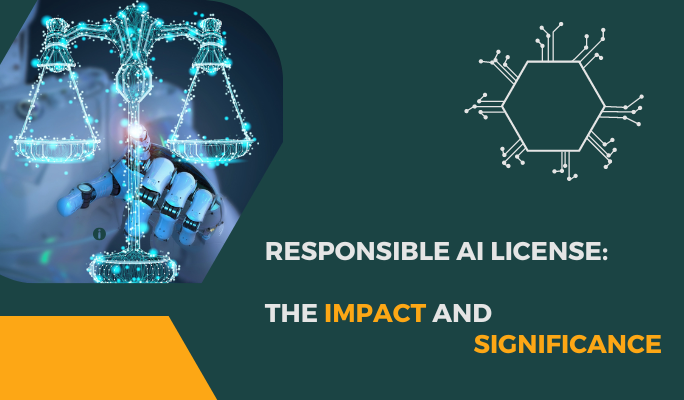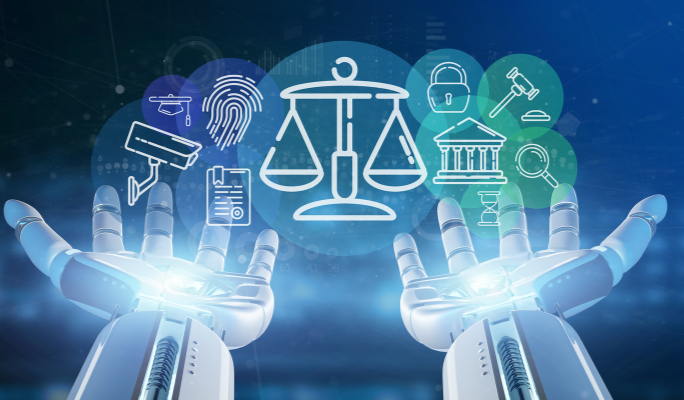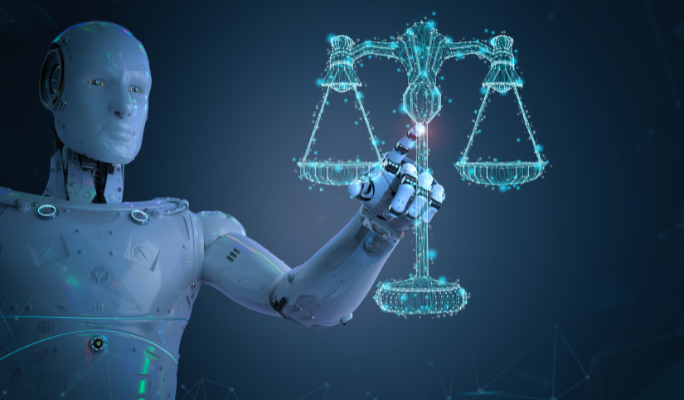Responsible AI License: Exploring the Impact and Significance

Responsible AI License
Every day, AI is becoming more involved in different parts of our lives.
Which is why it is really important to handle the Responsible AI License carefully, especially when it affects a business's success. The European Union has started to develop their own EU AI act.
With the growing importance of AI, it’s crucial to understand the role of the AI regulatory. In this blog, we will talk about AI license and how it creates an impact in the AI community.
What Is A Responsible AI License?
People have been talking a lot about AI development - how it is being used and sold these days.
That's why they came up with a special kind of license called Responsible AI Licenses, or RAILs for short. These licenses also serve as the solution for why AI should be regulated.
RAILs are licenses that have rules about how the person or company using the AI can use it. These rules are there because the people who made the AI are concerned about what it can and can't do.
There are two types of RAIL licenses. One type is for things like machine learning models, source code, applications, and data. The other type is called OpenRAIL, and these open licenses let people use the AI feature for free and share it with others.
How Responsible AI License Works?
As mentioned above, the RAIL website says they have two types of licenses. One is for the people who make the AI software, and the other is the open source license for the people who use it. These licenses are meant to control how the software is used.
The licenses have special rules that say how the code can be used, copied, or shared. These rules are there to make sure that the technology doesn't cause harm.
Advanced technology brands and companies, especially those involved in big data and AI, must prioritize this new form of progress. Some well-known companies like Facebook, Apple, Amazon, and Microsoft are part of this group.
Pros And Cons Of RAIL License

Responsible AI license Pros Cons
Pros
- Quick and easy creation: Unlike laws, standard form agreements can be made and changed more easily and quickly. This means they can be adapted quickly to keep up with new technology. Many different groups can create lots of templates, which means more people can be involved in the process.
- Flexibility: Licenses can have basic contract rules without any big issues. This makes them good for promoting fairness and ethics in artificial intelligence. The rules can be changed to fit what the creator wants, which helps avoid conflicts caused by different cultural and legal understandings.
- Across borders: We can make AI regulations more similar across different places by promoting universally accepted contract rules. This would make business relationships between different countries and legal systems more certain and clear.
- Easy to understand: Contract templates are usually shorter and easier to understand than long legal documents. This means people who aren't lawyers can learn about what's in a license and how it works. It helps more people know about the terms of licenses and how they're used in practice.
Cons
- Too many patents: When everyone can make RAIL licenses without rules, it can result in many patents that are poorly made.
- No requirement to use: Unlike regular laws, people don't have to use license agreements in real life. This means they might not be used much because licensors don't trust them.
- Hard to make sure everyone follows: It's difficult to make sure everyone follows the rules in the contracts. First, it's complicated when licensors try to enforce their rights in courts that don't understand AI well. Second, licensors may not want to punish licensees who break the "ethical" rules if they still pay the fee on time.
- Limited regulations and rights: Contracts can't handle all legal issues, like crimes linked to AI, because they only deal with specific parts of the law. Also, they only apply to the people involved and don't create rights that everyone has. This means many things, like who owns AI creative works, can't be regulated properly and causes a lot of problems.
3 Key Considerations For AI Licensing
Controlling What AI Learns And Creates

Responsible AI License Control
It's important to know who owns what the AI systems learn and create. This helps avoid arguments and protects intellectual property (IP).
- AI-generated content: Decide who owns the content made by AI, like the developer, the user, or the AI itself. Set clear rules on who owns it and gets credit to avoid problems.
- AI models and algorithms: Clear up who owns the models and algorithms used in the AI system. Also, figure out who owns any changes or improvements made to these models while using the system. Think about whether the person using the system can change or improve the models, or if only the owner can.
- Data ownership: Sort out who owns the data used to train the AI system, and any data the system produces. Decide if the data can be shared, sold, or used for other things, and if there are any limits on that.
Making Sure AI Companies Act Responsibly
Making sure that vendors follow responsible AI practices is really important to reduce risks and maintain ethical standards.
- Open and responsible: Vendors should be required to share information about how the AI system works, including how it makes decisions and what data it uses. This helps users trust the system and understand how it works.
- Fairly and equally: Vendors need to make sure their AI systems treat everyone fairly and don't discriminate based on things like race, gender, or age. They should regularly check for biases and update the AI models to fix them.
- Privacy and data protection: Vendors must protect people's privacy and follow the rules about keeping personal information safe. This means using strong security measures like encryption and controlling who can access the data. They also need to use as little personal data as possible to protect people's privacy.
Setting Clear Rules And Agreements In AI Services
Following the rules and agreements is important to make sure the AI system does what your business needs and keeps everyone on the same page.
- Service level agreements (SLAs): SLAs are like guidelines that tell the vendor how well they need to perform. They set standards for things like how fast the AI system should respond, how accurate it should be, and how quickly customer support should help you.
- Following the law: This means making sure the AI system follows all the laws and rules that apply to it. These could include laws about protecting data, specific rules for certain industries, and laws about exporting certain things. To make sure everything is in order, you might need to check the vendor's practices and work with legal experts who understand the complex regulations.
- Protection and responsibility: This part is about who takes responsibility if something goes wrong. It's important to have clear rules in the AI licensing agreement about who is responsible for legal disputes, damages, or breaking the contract.
Final Thoughts
RAIL licenses are helpful tools that work together with the regulatory efforts of AI policies and regulations on a global level. They can actually put into action the principles and recommendations for AI that the OECD (a group of countries) has come up with.
RAIL licenses have the power to become an important tool for managing how AI is used in the economy. They could encourage new ideas and inventions in AI and help create a culture where responsible development is shared and embraced.
